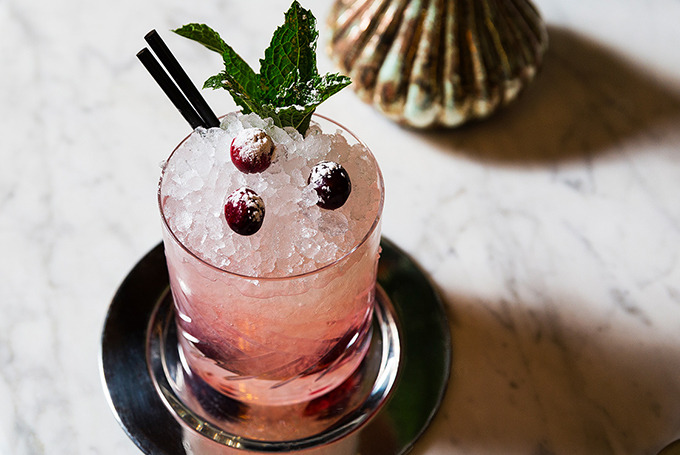How To Cook With Cranberries
Why you should be using cranberries in way more than just a Thanksgiving side dish
Argue with us all you want, but the most important part of Thanksgiving isn't the "friendly" political discussions, nor the 20-pound roast bird. We firmly believe Thanksgiving just isn't complete unless cranberry sauce has a seat at the holiday table. But there's more to cranberries than just the magenta cylinder-shaped jelly we see once a year in November.
"I think cranberry is an underdog fall ingredient," Mark Welker, executive pastry chef of Eleven Madison Park in NYC, says. "During fall, so much of the flavor in dishes is around spices and caramelized ingredients. . . . I like that cranberry can be bright and acidic while still speaking to the season." During months filled with heavy roast meats and cheese-laden casseroles, it's that brightness that becomes a necessary part of any feast. Here's how chefs are elevating this humble, snappy fruit to new heights.
Lean into Their Sweetness . . .
At EMP—otherwise known as the best restaurant in the world—Welkner uses the zippy berry as the final act in an extravagant 10-course tasting menu. In his dessert, Variations of Cranberry, the refreshing fruit is transformed into a vibrant purée, a tart glaze and a powdered, freeze-dried coating for spheres of pear and meringue. "The biggest piece of advice I have when it comes to cooking with cranberries is to make sure to balance the flavor, so they're not too tart or too bitter," Welker advises. For the pastry chef, that means using sugar and salt in combination with aromatics like vanilla and orange zest.
. . . Or Take Advantage of Their Tartness
Despite their intense sourness, don't be afraid to incorporate raw cranberries into your dishes. At Old Rose in NYC, chef Joey Scalabrino cures the fruit in a mixture of salt, sugar and miso paste to tame the acidity. Meanwhile, at his restaurant Pretty Southern in Brooklyn, Top Chef alum Sam Talbot purées a handful of the raw fruit to bolster vinegar for "an insane vinaigrette."
Make Use of Your Freezer
Don't limit yourself to fall and winter when it comes to cooking with cranberries. Although they reach their peak color and flavor during colder months, because they freeze so well, using their versatile flavor year-round is just a matter of stocking up on a few bags. Talbot actually prefers to buy his frozen to begin with. "They tend to taste a touch more zingy," he notes. Maneet Chauhan, chef of Chauhan Ale & Masala House in Nashville, also prefers working with frozen cranberries to fresh: "It just works better," she says.
Either way you buy them, cooking cranberries is a balancing act. If you've never popped a raw one into your mouth, imagine nature's version of a Warhead candy, where a face-twisting sourness finishes in a floral sweetness with a subtle bitterness.
Put a Spin on Classic Cranberry Sauce
Let's be clear: The canned stuff that slices into perfect cross-sections isn't disappearing from our tables anytime soon, but that doesn't mean we can't make room for variations on the theme. Chauhan pays tribute to her Indian roots with a ginger-cranberry chutney spiced with Bengali five-spice blend panch puran. She also recommends experimenting with other flavors that pair well with cranberries, including rosemary, fennel, cinnamon and cloves.
James Beard Rising Star Chef Jimmy Bannos accents the contrasting sweet and sour flavors through an Italian agrodolce, a sauce that translates literally into "sweet" and "sour." He serves this with turkey roulade at his Chicago restaurant, The Purple Pig, and says, "Cranberries are the best this time of year with rich fall and winter foods."
Turn Them into Seasonal Cocktails
At Tom Colicchio's Temple Court, head bartender Christopher James muddles the refreshingly tart berries with gin, lemon juice and simple syrup for a celabratory holiday cocktail. Or you could try our favorite post-Thanksgiving hack: Turn your leftover cranberry sauce into a festive frozen slushie.

